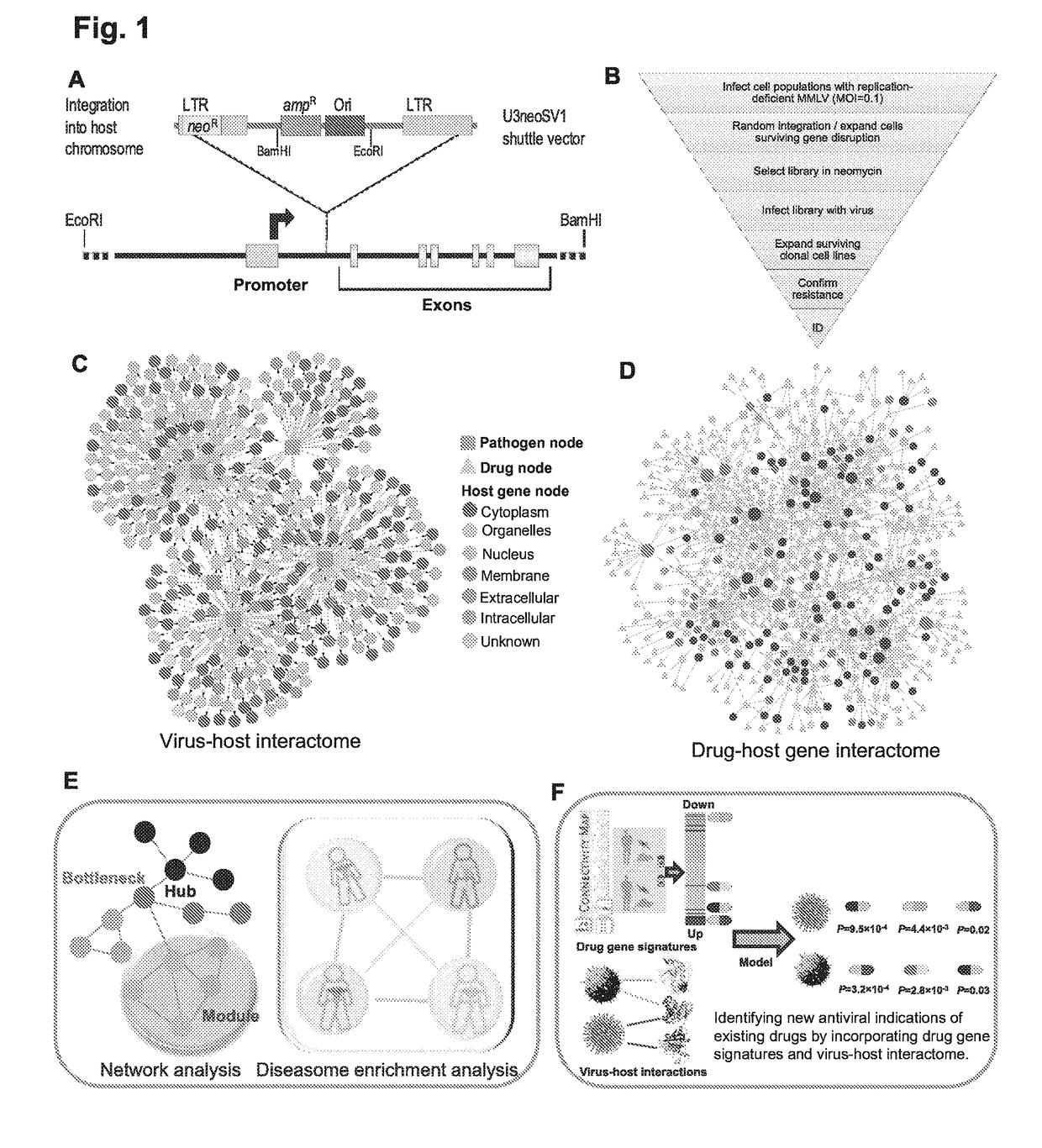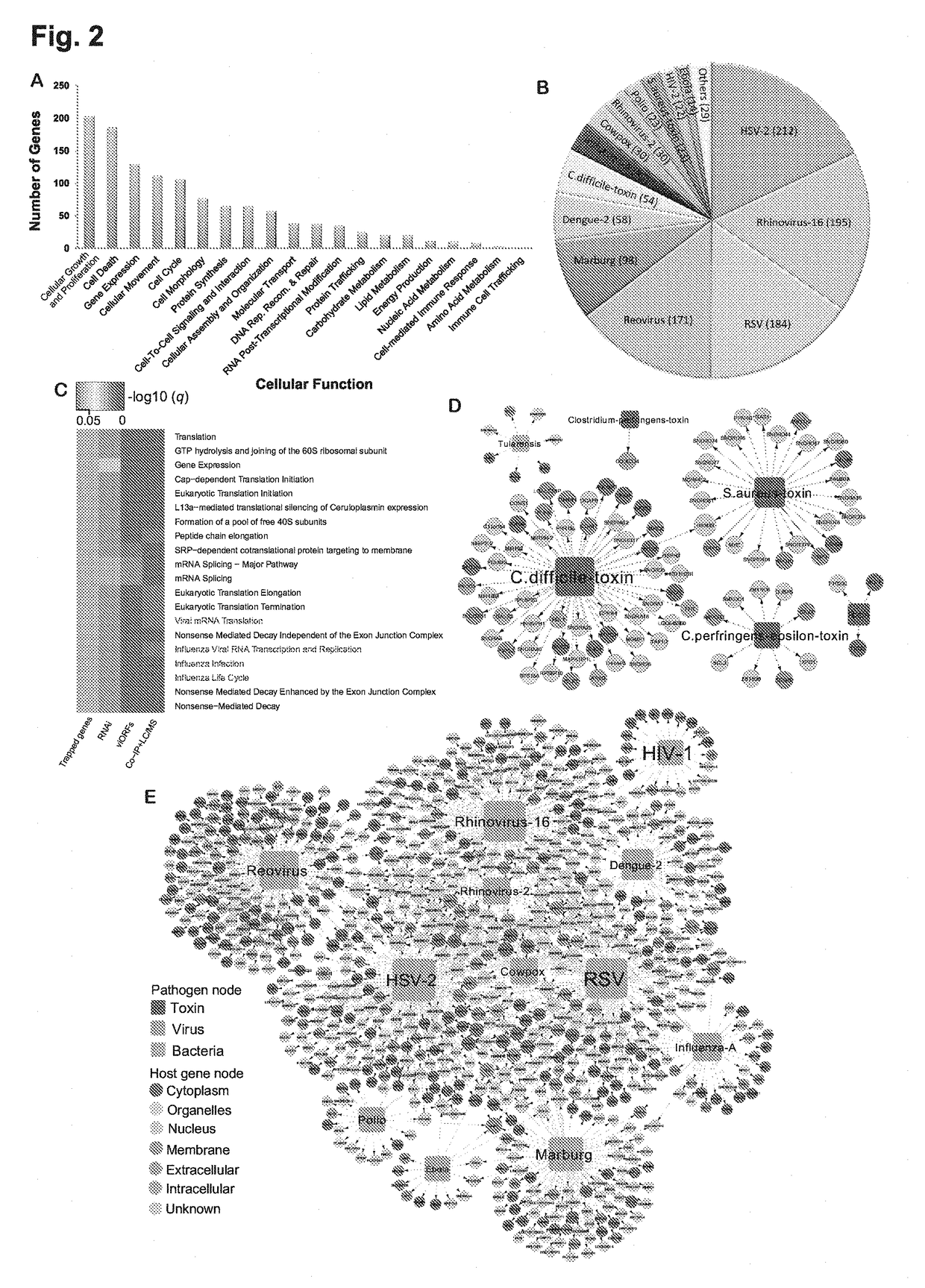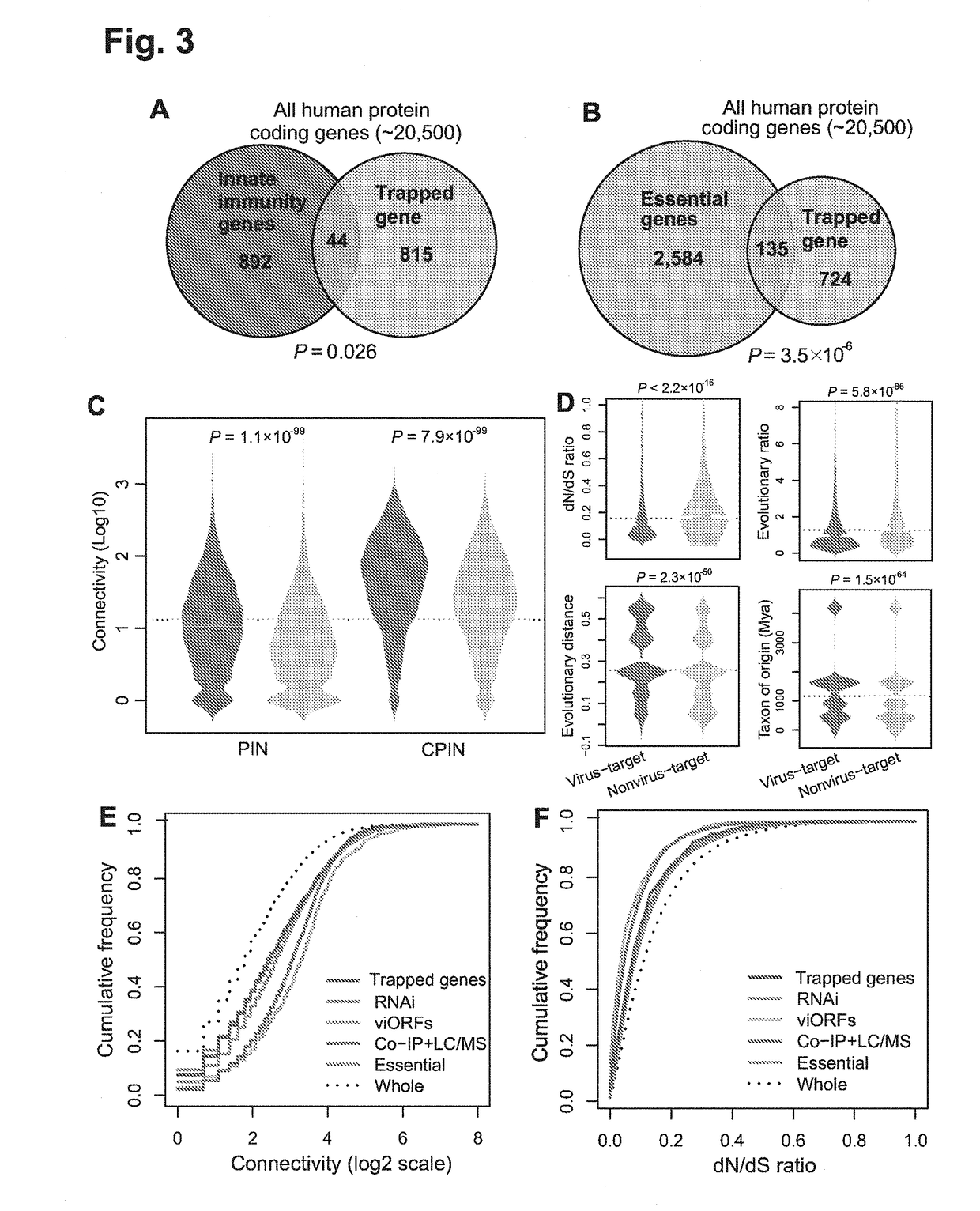Identification of cellular antimicrobial drug tablets through interactome analysis
a technology of interactome and drug tablet, which is applied in the field of identification of cellular antimicrobial drug tablet through interactome analysis, can solve the problems of limited scale of experimental techniques, millions of deaths, and limited application prospects, and achieve good pharmacokinetic profiles
- Summary
- Abstract
- Description
- Claims
- Application Information
AI Technical Summary
Benefits of technology
Problems solved by technology
Method used
Image
Examples
example
Systems Biology-Based Investigation of Cellular Antiviral Drug Targets Identified by Gene-Trap Insertional Mutagenesis
Methods
Cell Lines and Viruses
[0083]TZM-b1 cells were obtained from the NIH AIDS Research and Reference Reagent Program (Germantown, Md.). HepG2, Hep3B, L, MDCK, and Vero E6 cells were obtained from the American Type Culture Collection (ATCC; Manassas, Va.). Cowpox virus (Brighton strain), human rhinovirus 2 (HGP strain), human rhinovirus type 16 (11757 strain), influenza A virus (H1N1; A / PR / 8 / 34 strain), poliovirus (Chat strain), and respiratory syncytial virus (A2 strain) were obtained from the ATCC. Dengue Fever Virus type 2 (16681 strain) was a generous gift from Dr. Guey Perng (Emory University). Herpes simplex virus type 1 (KA Strain) was kindly provided by Dr. David Knipe (Harvard University). Herpes simplex virus type 2 (186 strain) was a gift from Dr. Patricia Spear (Northwestern University). Reovirus type 1 (Lang strain) was obtained from Bernard N. Fields. ...
PUM
| Property | Measurement | Unit |
|---|---|---|
| Gene expression profile | aaaaa | aaaaa |
| Antimicrobial properties | aaaaa | aaaaa |
| Toxicity | aaaaa | aaaaa |
Abstract
Description
Claims
Application Information
 Login to View More
Login to View More - R&D
- Intellectual Property
- Life Sciences
- Materials
- Tech Scout
- Unparalleled Data Quality
- Higher Quality Content
- 60% Fewer Hallucinations
Browse by: Latest US Patents, China's latest patents, Technical Efficacy Thesaurus, Application Domain, Technology Topic, Popular Technical Reports.
© 2025 PatSnap. All rights reserved.Legal|Privacy policy|Modern Slavery Act Transparency Statement|Sitemap|About US| Contact US: help@patsnap.com



